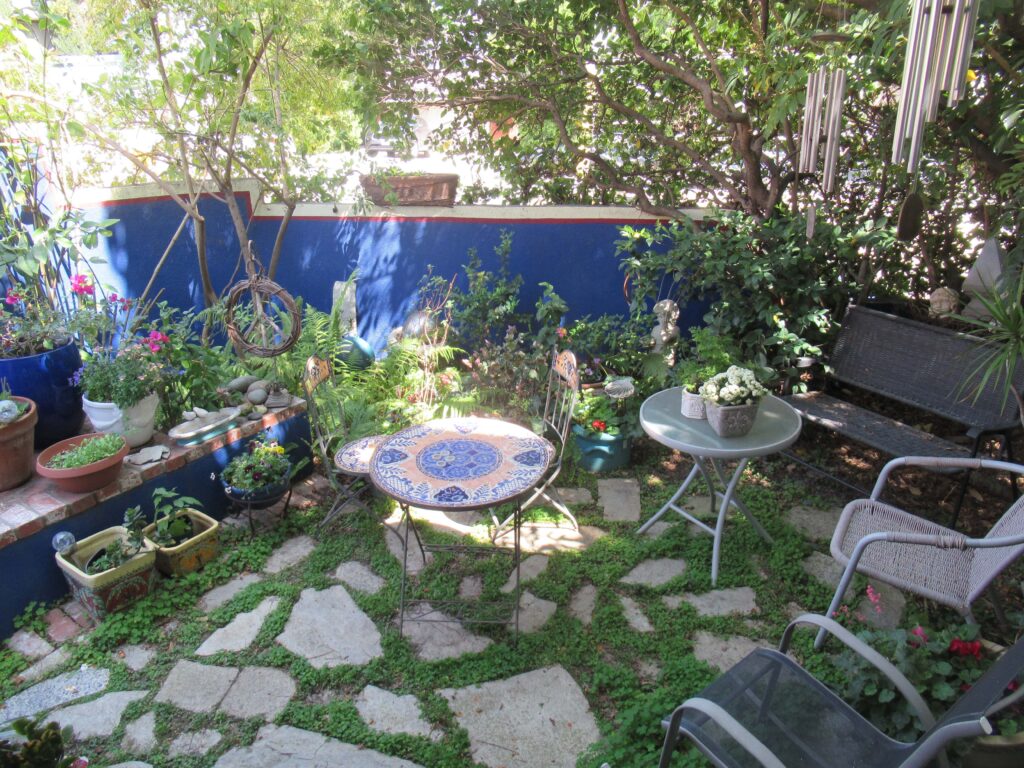Remember that odd tea set you inherited that you never use ever or the beautiful but badly chipped vase that was a gift you just can’t throw away, or the three remaining plates from your wedding dinner service? Make the memories last by bringing them into your mosaic design, thereby also creating a future heirloom one that may stand the test of time (as well as tables with iron table top, wood tables, etc). So, how to make a mosaic table?
QUICK PROJECT GUIDE
Hard labour 4/10
Skill level 5/10
Time needed about four hours
Finished size
450mm (H) x 650mm (W) x 1500mm (L)
Shopping list
One 1800 x 610 x 20mm laminated pine (tabletop) cut to: one 1500mm length One 2400 x 70 x 44mm pine (leg structure) cut to: four 516mm two 158mm One 1800 x 70 x 44mm pine (leg structure) cut to: one 1212mm
Two 2400 x 44 x 12mm pine (table border) cut to: two 1524mm two 610mm
Plus
wood
glue
mosaic tile
adhesive tile
grout mosaic tile
sheets
50mm chipboard screws
20mm chipboard screws
primer and paint
paintbrush or foam roller
Tools
drill
10mm spade bit
combination countersink bit
pencil
measuring tape
tri-square and straight edge
angle grinder and masonry cutting disc
5mm notched trowel or adhesive applicator/grout squeegee
handsaw and miter box
Project notes
Remember you can scale the proportions of the table to suit the overall dimensions of the room and its furniture; amend the cutting list accordingly.
Used 610 x 22mm laminated pine shelving for the mosaic table top.
Used 70 x 44mm pine for our base framework and edged the tabletop with 44 x 12mm pine to frame the tilework.
IMPORTANT
Remember that mosaic tile sheets measure 300 x 300mm, so your DIY mosaic table should be sized in increments of 300mm in length and width.
Download the Sketch
Get started
1 Use the pencil, measuring tape and tri-square to mark the 516 x 70 x 44mm lengths of pine at the required angles. Measure and mark a line 30mm in from the ends of these four lengths. Then draw a diagonal line from one corner to the opposite end of the line. Do this on all four lengths, as per cutting list diagram. Now use the handsaw and miter box to cut both ends of each length at this angle. Do the same with the two 158mm lengths, but have each end taper at opposite corners.
2 Place the pieces on a smooth surface or a plastic sheet and use wood glue to fix the 486mm lens to the 158mm crosspiece and allow to dry.
3 Once the components are glued, use the 10mm spade bit to drill a 10-15mm hole in the underside of the crosspiece angled towards the legs. Then use the 50mm chipboard screws to fix the leg framework.
4 Mark a line midway along the crosspiece then use a drill and combination countersink or screw bit to drill two countersink pilot holes. Then glue and screw the leg frames to the 1212mm support, as shown.
5 Fix 44 x 12mm lengths to the edge of the tabletop using the 20mm chipboard screws.
TIP
Use a couple of offcuts to create the correct overlap along the top side when fixing these strips in place.
6 Place the tabletop on the leg framework, line it up correctly and then set it in place using the 50mm chipboard screws.
REMEMBER
Drill countersink pilot holes first.
7 Mark out the pattern that you wish to create and then lay your tiles out to one side accordingly.
8 Now use the angle grinder and masonry cutting disc to cut each of the mosaic tile sheets diagonally across, as shown. Place the leaves on an offcut piece of timber to avoid damaging your work surface.
9 Mix the adhesive according to the instructions and apply to the tabletop using a notched trowel.
10 Carefully lay the cut tile sheets on the glue in predetermined positions. Once you are happy that the design works and all spaces are equal, press the tiles down gently. Allow drying.
11 Mix the grout and then use a squeegee to press it into all the crevices. The squeegee also helps to remove excess grout, making cleaning the tiles afterward much easier. Allow to dry and then wipe away any excess with a damp cloth. Lightly sand the timber elements and then apply a coat of primer followed by two coats of water-based enamel to finish.

